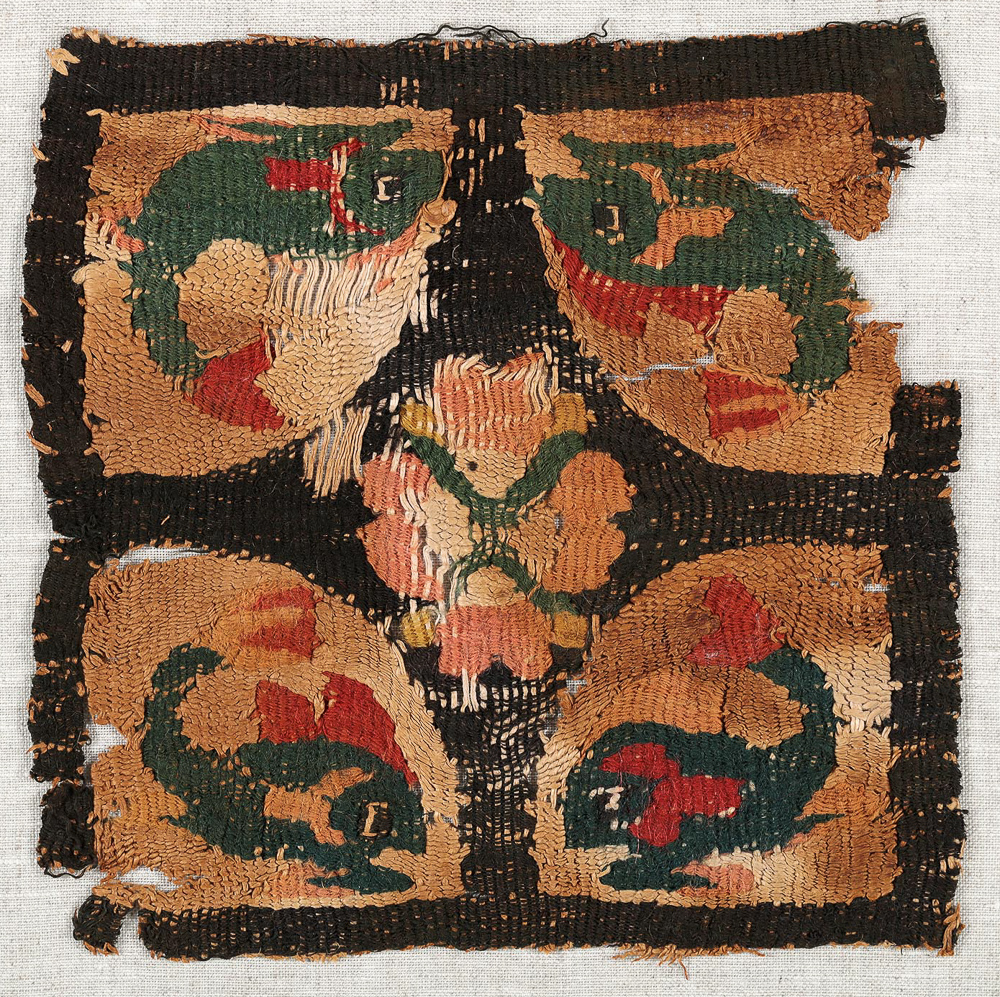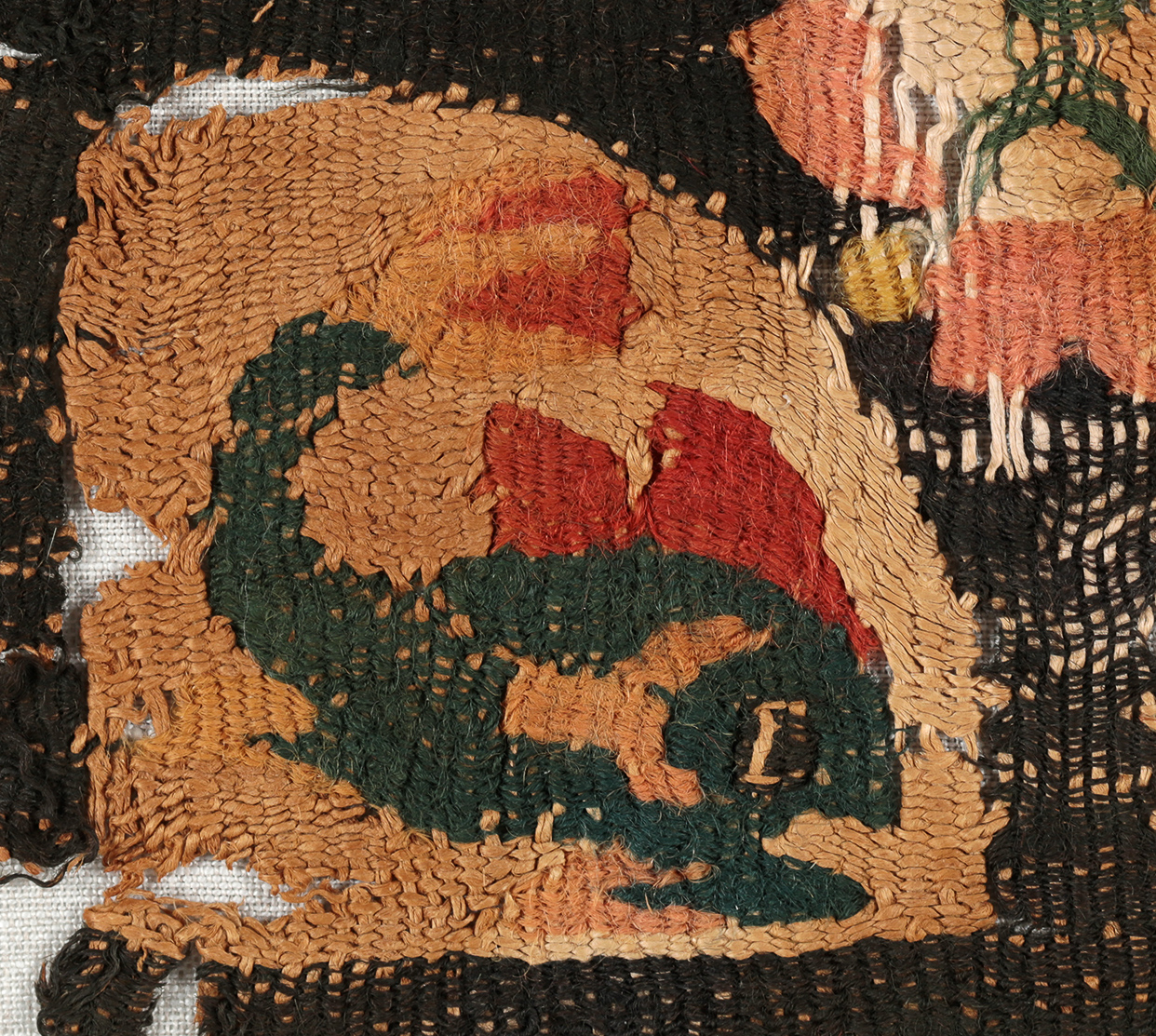In the centre, a flower with four heart-shaped petals on a dark brown ground shaped as a cross that extends to the outer edges. In each of the medallions in the four corners is a dolphin with a green-blue body and red and pink fins. They are arranged back-to-back in facing pairs.
Origin:
Egypt
Date:
6th - 8th century
Material:
Linen and wool
Dimensions:
Warp: 16.5 cm, weft: 17 cm
Comparisons:
Louvre, inv. MNC 1418 (funerary relief).
Considered to be the rescuer of people from shipwrecks and inherited from the Classical repertory, the dolphin was a symbol of protection. The first Christians extended this notion to the health of the soul, as can be seen in architectural capitals and bas-reliefs. This motif was adopted by weavers, but it is difficult to ascertain whether the intention was symbolic, Christian, or purely decorative.
Provenance:
Collection Coptic textiles Fill-Trevisiol: donation
Location:
Musée royal de Mariemont
Linen and woollen tapestry
I. No ground weave
II. Tapestry areas
Warp:
natural-coloured linen
Weft:
red, yellow, pink, green, and brown wool S: +/- 34/cm; natural-coloured linen S:
different thickness 18-30/cm
Weave:
extended tabby 2/2
Ribs per cm:
6
Sewing Yarn:
S2Z
Special techniques:
slit tapestry, eccentric weft


